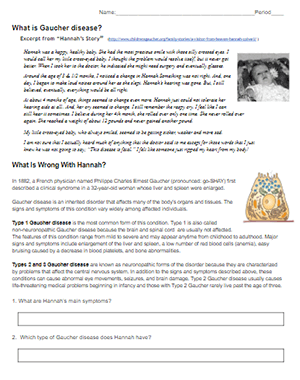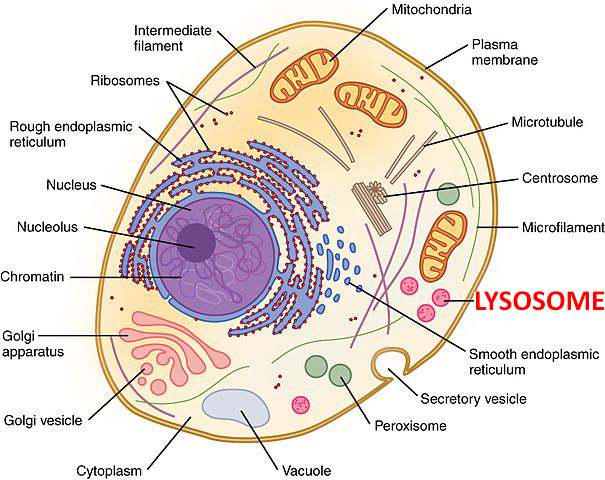
In a basic biology class, students learn that lysosomes are responsible for breaking down substances. I usually refer to these substances as waste products. I might even go into how macrophages absorb and digest bacteria as part of an immune response.
With the AP Biology students, who have already learned cell basics, I like to go into more nuanced details about how important lysosomes are with regard to waste disposal. There are several diseases associated with malfunctioning lysosomes. Tay-Sachs is probably the one most people have heard about, but there is also Gaucher and Batten disease.
I created this mini-case study about Gaucher disease as a way for students to make connections between cell organelles and human physiology. It starts with a story (and link) about a mother dealing with the decline of her newborn. Though I hate to just give students sad stories as cases, very few lysosomal storage disorders (LSD’s) have happy endings. In most cases, the disorder is fatal.
One notable exception, phenylketonuria (PKU), can be a managed disease as long as the diagnosis is made early. Newborns in many countries are automatically screened for PKU. These children can live a healthy life if they adhere to dietary restrictions. But, that is ONLY if they are diagnosed at birth. Otherwise, the cell’s inability to break down phenylalanine will lead to the same fatal consequences as seen in other LSDs.
In other words, LSD’s are generally a class of disorders that are just not compatible with life. Lysosomes aren’t flashy or meme-worthy, like the mitochondria, but they are just as important!
A Two Page Case Study

After students read Hannah’s story, they learn about the history of Gaucher disease and how there are different types of the condition. Type 1 Gaucher disease is not usually fatal, but does cause problems. Type 2 and 3 are always fatal and there are no treatments or cures.
In the last section, students learn how a mutation in a gene results in a faulty enzyme. This enzyme is responsible for breaking down a fatty substance called glucocerebroside. This substance then builds up inside the cells until it reaches toxic levels that destroy the cells and displace normal cells.
As students progress through the story, they answer questions about the case, the symptoms, and the physiology of the disease.
This is not a long case and can be integrated into a classroom presentation that reviews cell organelles. The Google Doc contains the student worksheet and links to sources.

